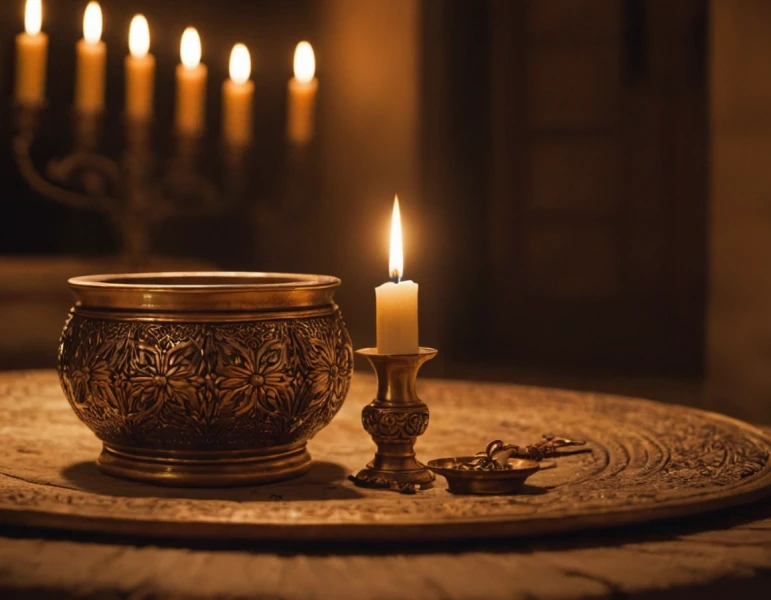Educa UNIVERSITY|ART AND ARCHITECTURE
Sacred Art: A Journey Through Spiritual Beauty
Related Masters
Sacred Art: A Journey Through Spiritual Beauty
"Art is the reflection of the invisible," some say, and few forms of expression embody it better than sacred art. Throughout my life, I have had the fortune to be in direct contact with this artistic manifestation in its many forms. From the majestic cathedrals to the delicate sculptures and paintings that adorn churches, sacred art is much more than simple aesthetics: it is a bridge between the human and the divine.
What is Sacred Art?
Sacred art is any artistic creation that has a religious purpose and is intended for worship. Although it is often confused with religious art, sacred art goes beyond. It is not only a representation of faith or religious themes, but is directly linked to ritual and worship. Thus, a painting of the Virgin Mary is not only an image that inspires devotion, but can become a tool to meditate or connect with the divine.
Some classic examples of sacred art include the sculptures of Michelangelo, such as the Pietà, or the frescoes of the Sistine Chapel. These works not only stand out for their artistic value, but also for their ability to elevate the spirit, facilitating the connection with the sacred.

Sacred Art in History: A Tool for Evangelization
Throughout history, the Catholic Church has used sacred art as a powerful tool for evangelization. During the Middle Ages and the Renaissance, images of saints, biblical scenes and depictions of the life of Christ were the perfect means to teach the mysteries of the faith to a population that, for the most part, could not read.
Every painting, every stained glass window and every sculpture told a story. For example, the Via Crucis is one of the best known representations of sacred art that, step by step, narrates the suffering and passion of Christ. These works had a clear pedagogical function, they were not only decorative. They helped people to visualize the biblical stories, creating a space conducive to reflection and prayer.
In addition, the great Gothic cathedrals such as Notre Dame or Chartres Cathedral were not only buildings of worship, but symbols of faith and power. Their tall towers and rose windows were a way of bringing heaven to earth, and the use of light through stained glass created a mystical atmosphere that helped the faithful connect with the celestial.
The Different Expressions of Sacred Art
One of the most fascinating aspects of sacred art is its diversity. Depending on the religion or geographic region, this art takes on different forms and styles.
Religious Painting
From frescoes in chapels to icons in Orthodox churches, religious painting is one of the most traditional forms of sacred art. Artists such as Leonardo da Vinci and El Greco gave life to biblical scenes, such as the Last Supper or the Resurrection of Christ, which not only seek to be beautiful, but to move the viewer to a state of spiritual contemplation.
Religious Sculpture
Sculptures, often made of marble or wood, also play an important role in sacred art. In many churches, it is common to find three-dimensional images of saints, angels and scenes from the Passion of Christ that seem to come to life, evoking a physical presence of the divine.
Sacred Architecture
Perhaps one of the most imposing manifestations of sacred art is architecture. Churches, cathedrals and basilicas are not only places of worship, but are designed to inspire awe. A prime example is St. Peter's Basilica in the Vatican, whose architecture seeks to reflect God's greatness on earth.
The Gothic cathedrals with their soaring ceilings and stained glass windows not only sought to be impressive, but also served to raise the spirits of the faithful toward heaven, reminding them that they are in the presence of the divine.
Sacred Art in Different Cultures
Sacred art is not exclusive to Christianity. Other religions have also developed their own forms of sacred art. In Tibetan Buddhism, for example, we find the mandalas and thangkas, which are used as meditation tools. In Islam, where the representation of humans and animals is forbidden, sacred art manifests itself in intricate geometric patterns and calligraphy that decorate mosques and sacred texts.
In every religion, sacred art reflects the spiritual tenets of the faith, acting as a window into the invisible.
The Validity of Sacred Art in the Modern Era
Despite living in an age dominated by technology and digitization, sacred art continues to hold a special place in the heart of humanity. Museums of sacred art, such as that of the Vatican, continue to attract millions of visitors, not only for the beauty of the works, but for the profound meaning they convey.
In addition, contemporary artists such as Salvador Dalí have also turned to sacred art to express their vision of the world, as evidenced by his work Christ by Saint John of the Cross, an example of how sacred art continues to inspire modern creators.
Why Is Sacred Art Still Important?
Sacred art, beyond its aesthetic beauty, has a mission: to elevate the soul, connect us with the spiritual and remind us that there is something beyond the material. In a world full of noise and distractions, sacred art invites us to stop, contemplate and reflect on our existence and our relationship with the divine.
Each work is a reminder that the sacred is still present in our daily lives, and that through art, we can experience a glimpse of the transcendental.
Faculties
Trainings
The faculties embrace diverse academic disciplines and fields of study, opening doors to new perspectives and exploring different spheres of wisdom in a constantly evolving world.














